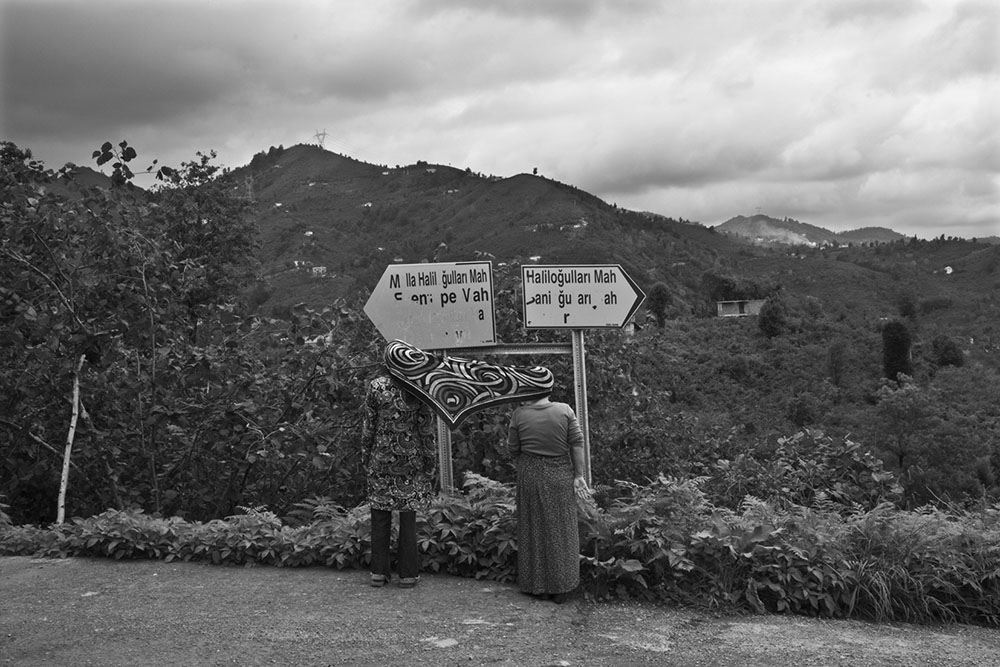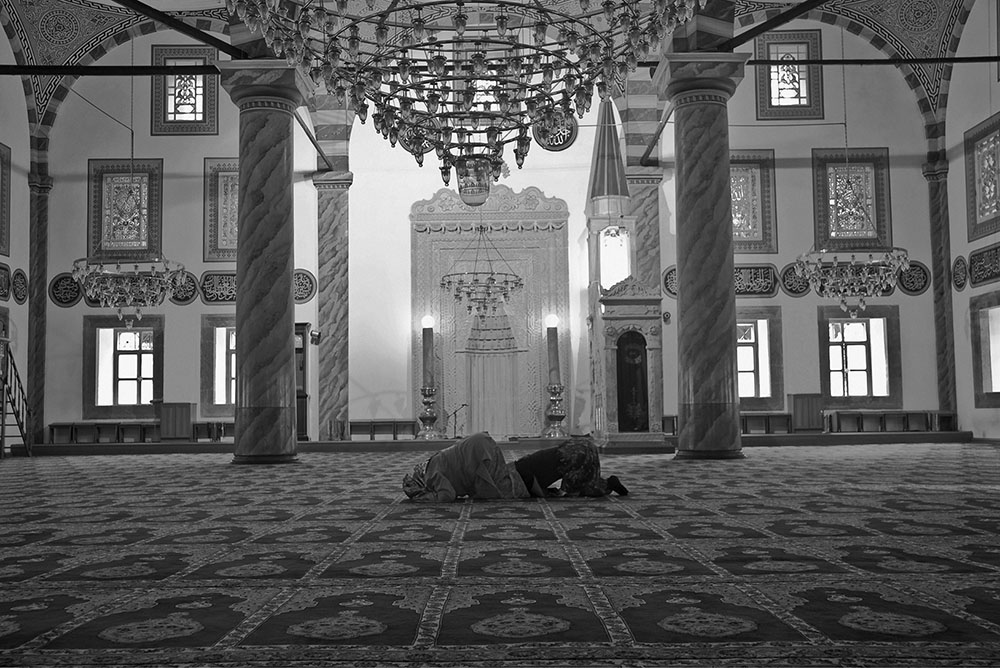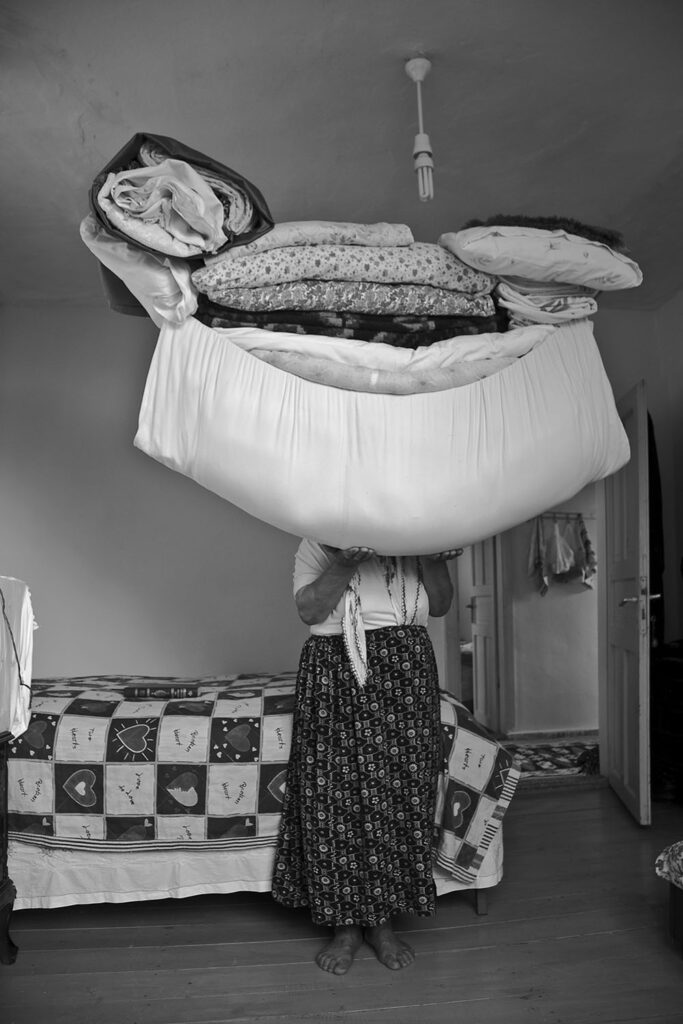Övül Ö. Durmuşoğlu / Version 2
Spatial is Subjective, Spatial is Performative
Övül Ö. Durmuşoğlu on TrabZONE, 2010 by Nilbar Güreş
For Nilbar Güreş, remembering is a performative exercise, because what she remembers is accompanied by the immediate desire to change it as she translates it into an artistic work. Each of us remembers differently, following a personal, idiosyncratic trail that belongs to us alone. Güreş remembers spatially—her memories are tied to specific regions, and her connection to these places is deeply painterly, even though her work is generally read within the context of examining gender constructions from a postfeminist perspective. Thus, engagement with landscape and geography is inevitable in her artistic practice, consistently emerging as a central narrative in her staged scenes. The places she travels to in order to realize her series are closely tied to her own past. The title TrabZONE is no coincidence—here, the artist takes us on a journey into a specific zone of her unconscious childhood memory, represented by the city of Trabzon near the Black Sea in Turkey. This is not merely an attempt to recall this place from memory, but also a construction of an imaginary geography to overcome any rationalization.
Humor in the Black Sea region plays a special role in the folklore of Turkey’s collective unconscious. One of its most important cities, Trabzon, is known for its fanaticism regarding religious and national values. Trabzon is thus a place of numerous paradoxes, because on the one hand it is characterized by Turkish-Muslim identity, while historically it was the center of Pontus (during Hellenistic and Roman times), and its inhabitants were among the first to convert to Christianity. Today, it is widely associated as the hometown of Ogün Samast, the murderer of Turkish-Armenian journalist Hrant Dink—a symbol of nationalist brotherhood among Anatolian citizens. In a word, Trabzon is a city full of tension and intensity.
As already mentioned, gender issues and social norms are key narratives that Nilbar Güreş negotiates. In Trabzon, women’s visibility in public life is extremely restricted. Women typically only appear in public accompanied by their fathers, brothers, cousins, fiancés, or husbands. Life remains strictly segregated by gender: while men work or socialize in coffeehouses, women are expected to carry the full burden of domestic and family responsibilities. These restrictions and their surrounding conditions spark Güreş’s imagination to create alternative scenarios—ones that might lead to autonomous forms of female socialization. With humor, she compels her viewers to look beyond the familiar patterns they are accustomed to think. Her sincere representation of her observations allows her to draw viewers—unexpectedly—into a process of identification and/or confrontation with their own pasts or presents. In Worship, Nilbar Güreş presents a taboo-breaking portrait of two women praying in the male-only section of Trabzon’s central mosque. One behind the other, one with its head under the skirt of the other, it develops a longing where it is least expected and belongs. Worship challenges the controlled gender separation in religious public space. Güreş believes that such a “radical” performance partially deterritorializes the space, loosens the very foundations of such restrictions, and transforms the memory of the place—as she herself experienced it.
In Junction, a tightly tied headscarf connects two women—one older, one younger—each facing a different direction. The scarf symbolizes the tension of a restriction that dictates how a woman must behave to be deemed “honorable,” the heavy burden of femininity placed on women in small, conservative Anatolian family units. A tension that can be encountered everywhere in Turkey, in the center as well as on the periphery, in the east or the west, in different shapes and forms. Güreş’s choreography points to the difficulty that arises in the moment when a woman must decide whether to break with the patriarchal system she has always belonged to, or to allow it to define the rest of her life.
For the artist, who always seeks to uncover what lies behind traditional structures, this north-eastern city known for its conservative values has proved to be a productive setting. Her stagings open a humorous space of imagination, compelling viewers to move beyond what they have been taught. In Beekeeper, we are offered, through four photos, a cinematic sense of a phantom moment: where has the beekeeper gone, after hanging up her protective gear?
Nilbar Güreş succeeds in breaking free from what she was taught about her origin and identity, yet never forgets where she comes from. Her anger at systemic injustice fuels an open and sincere relationship with the personal and the political. Her voice never loses its tone as she persistently speaks to the intolerability of violating the rights of those who are different, who do not conform to the normative frameworks created merely for the sake of order. Like the woman she portrayed in ÇırÇır, she imagines and hopes for a better future. As long as artists like Nilbar Güreş continue to propose alternative realities full of curiosity, willpower and survival imagination, I believe that one day there could be a better future.
All images: Courtesy of Galerie Martin Janda



